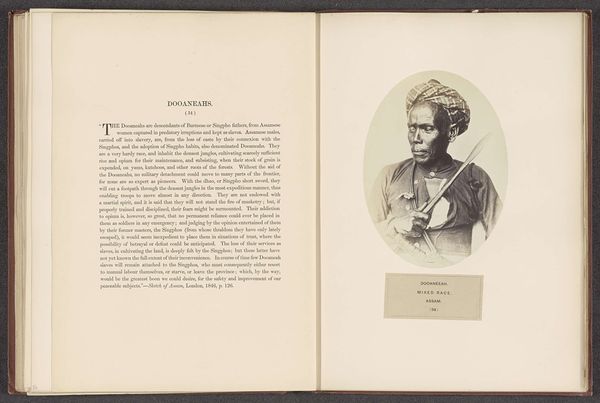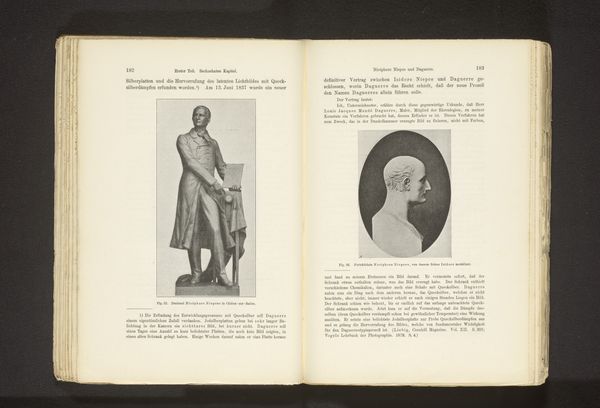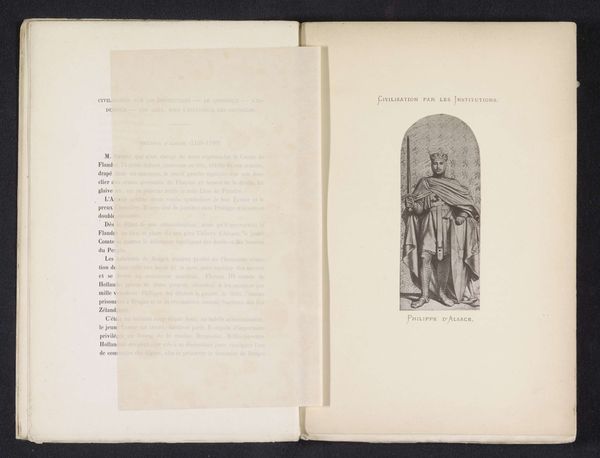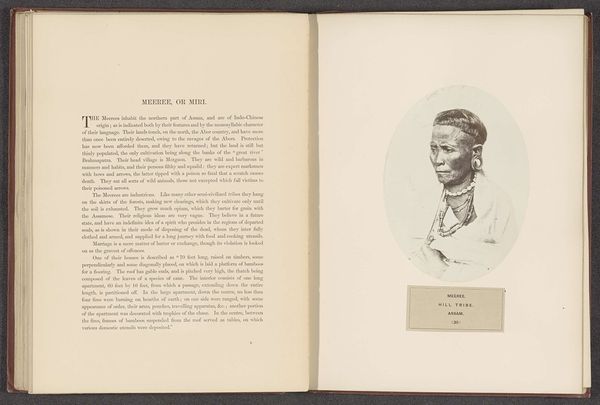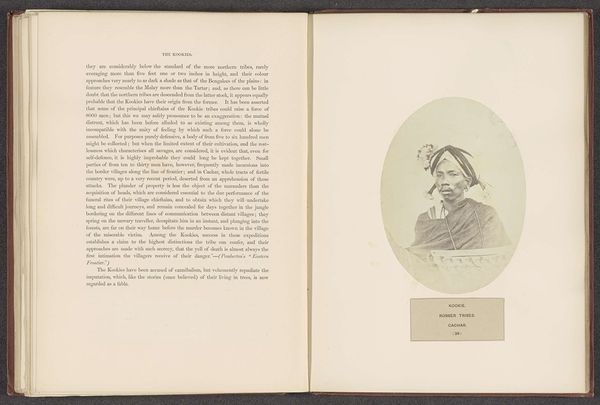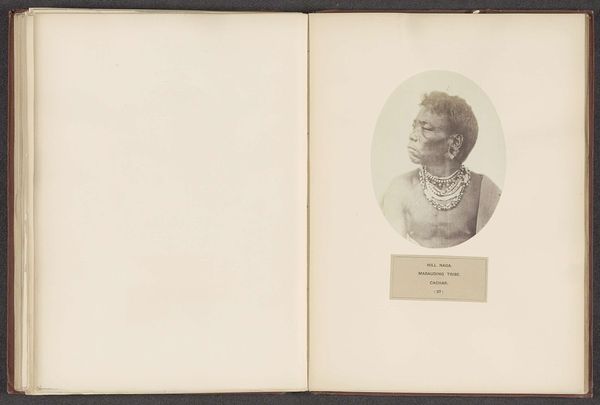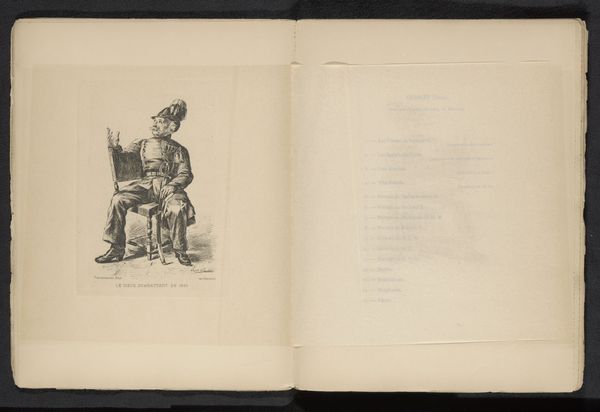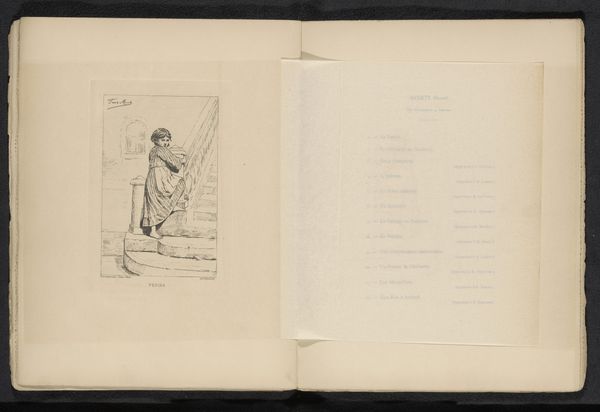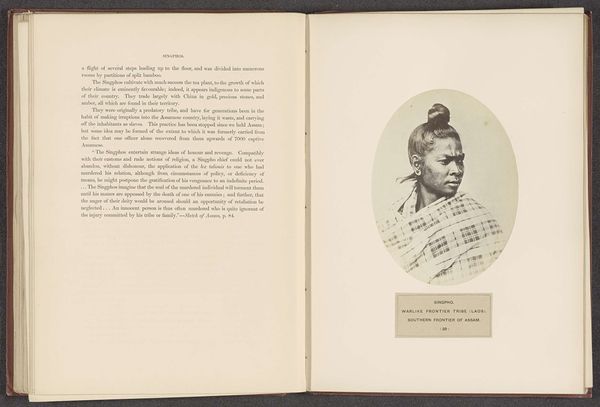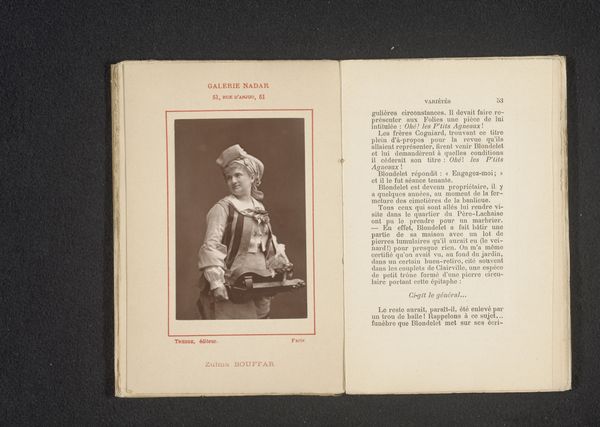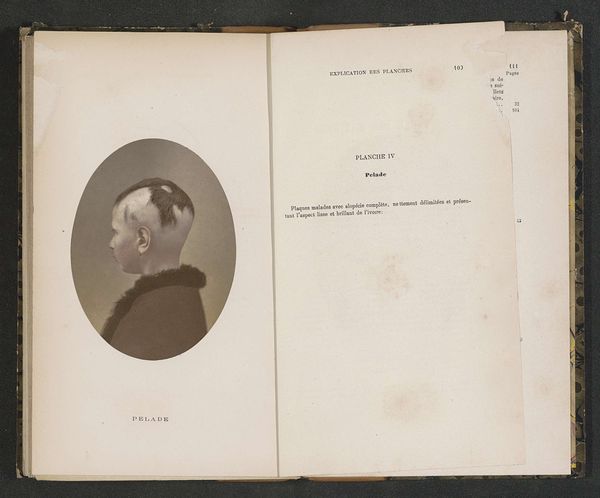
Portret van een onbekende Rengma (Naga) man uit Assam met een speer before 1868
0:00
0:00
albumen-print, photography, albumen-print
#
albumen-print
#
portrait
#
photography
#
orientalism
#
albumen-print
Dimensions: height 177 mm, width 129 mm
Copyright: Rijks Museum: Open Domain
Curator: This albumen print, captured before 1868, is entitled “Portrait of an Unknown Rengma (Naga) Man from Assam with a Spear," and was created by Benjamin Simpson. Editor: There's a stark formality to it. The oval crop tightly frames the figure, almost pressing him forward. I wonder what was intended by isolating him so dramatically. Curator: The framing emphasizes the man's regalia – the intricately woven headwear, the beads, and the spear. This photographic style, particularly during that era, reflects Orientalist views. It served as a way for the colonizers to categorize and document the people they encountered. The anthropological lens flattens this man’s complex identity into a single image representing an entire people, stripping the agency of its subjects. Editor: But there’s an undeniable realism present. The lighting meticulously defines every contour of his face and the texture of his garments. What meaning might reside in its contrasts? Curator: The stark contrast amplifies a power dynamic. This is not a casual snapshot; it's a carefully constructed portrayal, likely dictated by the photographer's vision of how an "exotic" subject should be presented to a Western audience. The “realism” is a tool of objectification. We should recognize that we do not know this person; only what the photographer wanted us to know. Editor: Perhaps. Yet, within the imposed structure, one can discern an attempt to convey strength. Note the upright posture, the direct gaze… The formal elements communicate resolve, whether intentionally or not. Curator: Indeed, analyzing colonial-era images demands sensitivity. They operate within asymmetrical power structures and should provoke reflection on how images like these influenced perceptions of indigenous communities. The image’s title also hints at a possible dehumanization. This image isn’t named “Portrait of [Name]” – it’s “Portrait of an Unknown Man." The power of the title reinforces his identity as othered. Editor: Agreed. It reminds us that aesthetic appreciation must always be tempered by an ethical understanding of historical context. It also provokes questions about cultural representation and the burdens it entails for its subjects. Curator: This discussion underscores that no image exists outside of historical power dynamics. Editor: Indeed. Now, with a better awareness of this history, this photograph yields much greater insights.
Comments
No comments
Be the first to comment and join the conversation on the ultimate creative platform.
